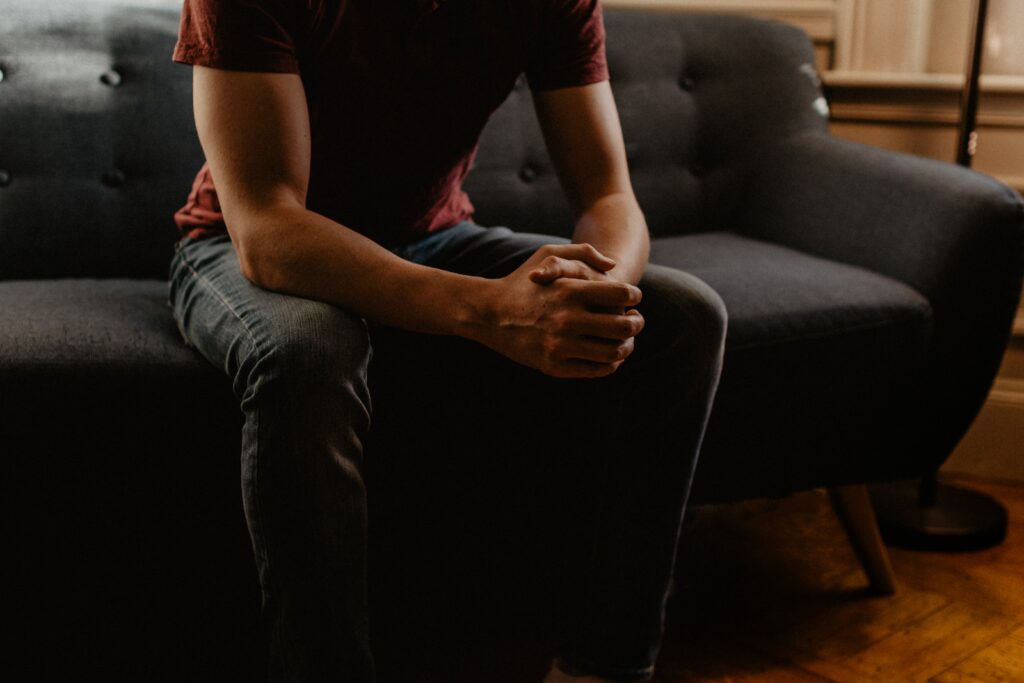Effective Communication
The Art of Successful Meetings

Photo by Christina @ wocintechchat.com on Unsplash
An excellent meeting transcends its helpful purpose and becomes an engaging, meaningful experience that leaves a positive and lasting impression on all participants. While the specific dynamics of a successful meeting can vary based on the context and participants involved, several key elements consistently contribute to making a personal meeting a good one.
First and foremost, effective communication is the linchpin of any successful meeting. Clear and concise communication ensures all participants understand the meeting’s intention, goals, and agenda. A well-defined agenda sets the tone and direction of the discussion, helping participants stay focused and engaged. Additionally, the ability to actively listen and provide constructive feedback is paramount. An open and respectful dialogue encourages diverse perspectives and fosters an environment where ideas can be freely exchanged and refined. I encourage people to argue, fuss, and fight – respectfully.
The timing and scheduling of a meeting play a crucial role in its success. A good meeting respects participants’ time by starting and ending punctually. It’s a demonstration of respect to start and end on time. Being mindful of time constraints demonstrates professionalism and consideration for everyone involved. Furthermore, spacing out meetings and allowing breaks can prevent participant fatigue and ensure individuals are mentally and emotionally prepared to contribute effectively.
Engagement is a key factor distinguishing a good meeting from a lackluster one. Keeping participants engaged requires a mix of interactive elements, such as discussions, brainstorming sessions, and collaborative activities. Incorporating multimedia presentations, visual aids, and real-life examples can stimulate interest and enhance understanding. An engaging meeting also encourages active participation from all attendees, creating an inclusive environment where everyone feels valued and heard.
A positive atmosphere significantly influences the outcome of a personal meeting. Establishing a welcoming and respectful ambiance encourages participants to express their opinions without fear of criticism or judgment. A good meeting is characterized by a sense of openness, where constructive criticism is offered in a supportive manner, and diverse viewpoints are embraced. Building rapport among participants through small talk and personal interactions before diving into the main agenda can create a more relaxed and productive atmosphere. I strongly encourage opening every meeting with the question, “What’s Up?” Answers can be personal and or professional.
Effective leadership is pivotal in guiding a meeting toward its objectives. A good meeting benefits from a facilitator who can manage the flow of the discussion, ensure that everyone has a chance to speak, and steer the conversation back on track if it deviates from the agenda. Strong leadership also entails recognizing and valuing contributions, providing recognition for accomplishments, and addressing conflicts tactfully and constructively.
Practical outcomes and action items are essential to a successful meeting. A productive meeting concludes with clear decisions, action steps, and responsibilities assigned to specific individuals. Following up on these outcomes after the meeting is equally crucial. A good meeting is not isolated but feeds into a larger workflow, contributing to progress and momentum. Keep a Who What When list to review at the next meeting.
Flexibility is an attribute that can elevate a meeting from good to exceptional. While a well-defined agenda is important, being open to spontaneous discussions or addressing urgent matters that arise demonstrates adaptability and responsiveness. Flexibility also allows participants to contribute ideas that may not have been part of the original plan, potentially leading to unexpected breakthroughs or solutions.
Lastly, a good meeting promotes continuous improvement. After the meeting concludes, a review of its effectiveness is essential. This can involve soliciting participant feedback, analyzing the meeting’s outcomes, and identifying areas for enhancement. Learning from each meeting experience and implementing changes based on feedback ensures that subsequent meetings become even more productive and valuable. I like to rate the meeting on a scale of 1 to 10 where 7 is not an option. And ask each participant for their key takeaway.
Share this:
Streamlining Communication: Enhancing Leadership in Multifamily Property Management
Cultivating Efficient Communication Strategies for Multifamily Property Managers

Photo by Pavan Trikutam on Unsplash
Summary
Effective communication is paramount for successful leadership in multifamily property management. Today, we will dive into property managers’ challenges in navigating lengthy and unproductive conversations and offers strategies to guide individuals toward concise communication gracefully. By implementing these techniques, multifamily property managers can enhance productivity, improve team collaboration, and provide exceptional resident experiences.
Problem
Multifamily property managers often encounter situations where individuals ramble, resulting in time-consuming and unfocused conversations. These lengthy exchanges can hinder productivity, impact decision-making, and lead to miscommunication. Property managers must navigate these conversations skillfully to maintain efficiency and ensure that essential information is effectively exchanged. I like to say, speak with brevity and clarity.
Solution
Active Listening and Clarification: Property managers can guide speakers to articulate their points concisely by actively listening and seeking clarification during conversations. This approach encourages individuals to focus on key details and eliminates unnecessary rambling.
- Setting Clear Expectations: Property managers can establish clear communication expectations with team members, customers, and vendor partners. This includes setting time limits for discussions and encouraging individuals to prepare and organize their thoughts before engaging in conversations.
- Using Open-Ended Questions: Property managers can facilitate productive communication by asking open-ended questions and encouraging individuals to respond concisely. This helps to steer the conversation toward relevant information and prevents excessive rambling.
These strategies enhance productivity, foster collaboration, and ensure that essential information is effectively exchanged.
.
Share this:
Unlocking Personal and Professional Growth: The Power of Inner Child

Photo by Kelly Sikkema on Unsplash
Inner child work is a therapeutic approach that involves exploring and healing childhood wounds, traumas, and unmet needs. It is a powerful tool that can help individuals to reconnect with their authentic selves, build resilience, and enhance their personal and professional development. It’s hard work and is often ignored in our quest to become leaders in the multifamily space and life.
Let’s explore how inner child work can be applied in a professional development context. And know this; it’s work worth doing.
- Building self-awareness and emotional intelligence
Inner child work involves exploring and processing suppressed or ignored emotions in childhood. By doing so, individuals can better understand their emotional landscape and develop greater emotional intelligence. This can be particularly helpful in a professional context where individuals must navigate complex relationships, manage conflicts, and make sound decisions. By being more in tune with their emotions, individuals can make better choices and communicate more effectively with others.
- Enhancing Creativity and Innovation
The inner child represents a person’s playful, curious, and imaginative side. Individuals can tap into their creativity and innovation by reconnecting with this aspect of themselves. This can be particularly helpful in professions requiring individuals to develop new ideas, approaches, and solutions. By accessing their inner child, individuals can generate fresh perspectives and insights leading to breakthroughs and innovation.
- Developing resilience and coping skills
Childhood traumas and wounds can impact individuals and affect their ability to cope with stress, setbacks, and challenges. Inner child work can help individuals to heal these wounds and develop resilience and coping skills. By doing so, individuals can better handle difficult situations, bounce back from failures, and persevere in adversity.
- Building healthy relationships
Childhood wounds and traumas can affect how individuals form and maintain relationships. By exploring and healing these wounds, individuals can improve their ability to connect with others healthfully and meaningfully. This can be particularly helpful in a professional context where relationships are essential for success. Individuals can enhance their communication, collaboration, and teamwork skills by building healthy relationships.
To summarize, inner child work can be a powerful personal and professional development tool. Individuals can build self-awareness, emotional intelligence, creativity, resilience, coping skills, and healthy relationships by exploring and healing childhood wounds. To explore inner child work, consider working with a trained therapist or coach who can guide you.
Share this:
Effective Communication in Multifamily

Photo by Volodymyr Hryshchenko on Unsplash
Effective communication is the cornerstone of a successful workplace, and it’s essential to ensure that all team members are on the same page and working towards the same mission and vision. One key aspect of effective communication is over-communication; let’s explore why it’s so valuable.
First and foremost, over-communication helps to prevent misunderstandings. Miscommunications can occur when information is not communicated clearly or accurately, leading to significant problems, such as missed deadlines, incorrect work, and frustrated employees. By over-communicating, you can help reduce the likelihood of misunderstandings and ensure everyone is on the same page.
Over-communication also helps to build trust and transparency in the workplace. When employees feel that they are being kept in the loop and are aware of what’s happening, they are more likely to trust their leaders and feel more invested in the company’s success. By over-communicating, you can help create a culture of trust and transparency, leading to increased engagement and productivity.
Additionally, over-communication can help to reduce anxiety and stress in the workplace. When employees feel they have all the information they need to do their jobs effectively, they are less likely to feel overwhelmed or stressed. Over-communication can also help to reduce the risk of burnout, as employees are less likely to feel like they are constantly playing catch-up or trying to fill in the gaps in their knowledge.
Finally, over-communication can help to improve the overall work environment. The workplace is more efficient and effective when everyone is on the same page and working towards the same goals. This can lead to increased job satisfaction, higher levels of engagement, and a more positive work environment for everyone.

